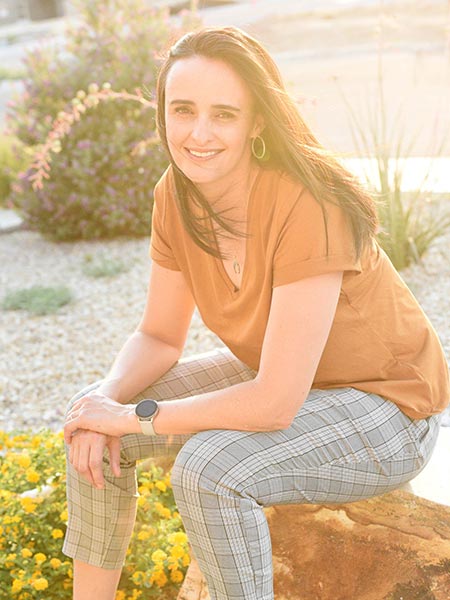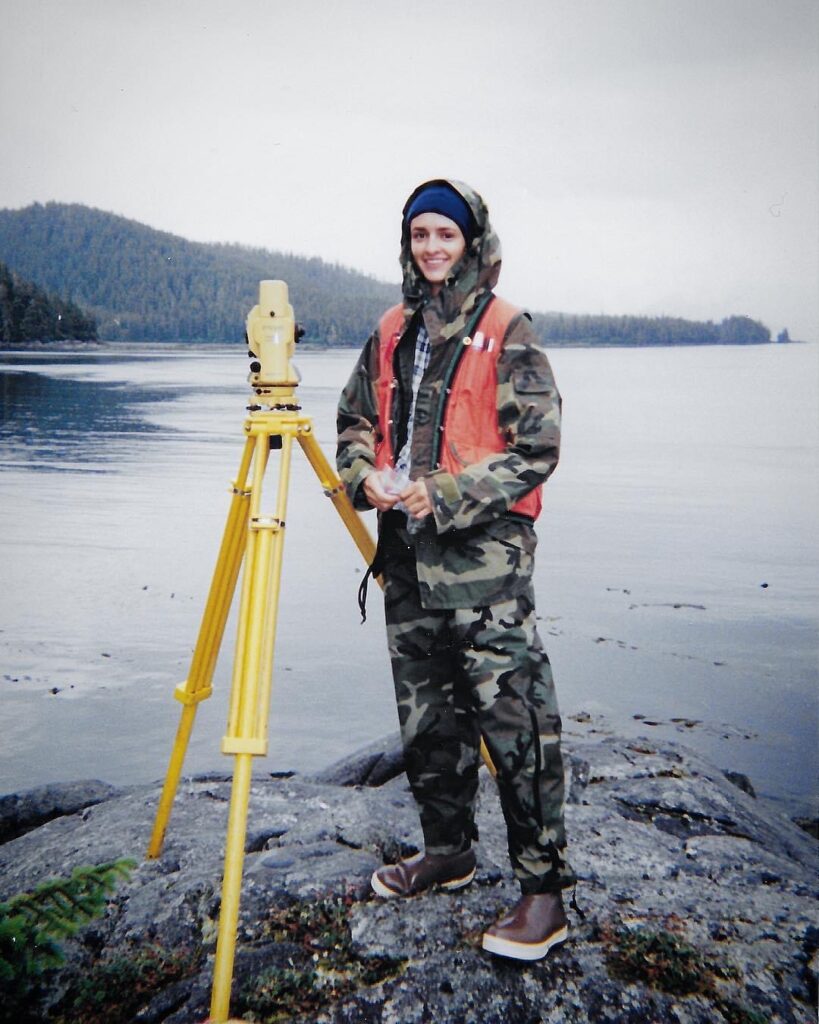
experience
In 2016, Allred was listed as one of xyHt Magazine’s 40 under 40 remarkable geospatial professionals. She is currently employed by the United States Army Corps of Engineers as the district land surveyor for the Walla Walla District in Washington State. Her position oversees all land surveying activities for the development of water resources projects on the Columbia and Snake rivers. Allred is from southwestern New Mexico and graduated from New Mexico State University with a degree in surveying engineering and from the University of Alaska Anchorage with a degree in geomatics.
Her experience includes working for the Bureau of Land Management in the Alaska and New Mexico field offices, conducting original boundary surveys, and conducting dependent resurveys. She’s a licensed professional land surveyor in six western states and has owned and operated her own land surveying firm in Silver City, New Mexico, for a number of years conducting boundary surveys, construction staking, and design for large-scale mining reclamation projects, water rights, mining claims, and utility surveys.
As NSPS has grown in recent years with increased participation from young professionals, Allred has been active in her state’s professional surveyor association (where she has served as president and as the NSPS director). She was also on the national executive board of directors and chairman of the NSPS Western States Director’s Council. She is currently the vice president of NSPS and is a representative to the International Federation of Surveyors (FIG).
How did you become interested in surveying?
My father is a real estate agent in southwestern New Mexico and had a difficult time getting land surveys done in a timely manner. He encouraged me to become a land surveyor because he thought they would continue to be in high demand.
In 1997, after graduating from high school, I attended New Mexico State University (NMSU) in Las Cruces, New Mexico, on an academic scholarship and started as a civil engineering major. By the second semester, I swapped to surveying engineering because of an opportunity to get an internship with the Bureau of Land Management in Alaska as a survey intern. I jumped at the chance because it was my dream to travel and live in Alaska from early childhood and because of the seed my father had planted in my mind about land surveyors.
Why did you get your surveying license? Why is it important to become licensed?
There was never a question in my mind on whether or not I would get my license. I always viewed it as the “end” goal of my professional journey. I believe in licensure because it demonstrates an individual’s competency to perform the duties of the profession. It protects the public from people who are not competent to perform land surveying and gives us a basis for minimum competency and requires us to follow the statutes within our jurisdiction. Without licensure there is no way to protect the public from fraudulent activity, maintain professional standards, and regulate land surveying activities.
Why are you so passionate about becoming involved in diversity and mentoring programs in surveying? Who is your mentor?
The combination of education and mentoring is key to becoming a proficient land surveyor. My first mentor after graduating from NMSU was Mr. Don Edgington, who was a dual licensed professional engineer and professional land surveyor. Due to his numerous hours spent with me reviewing the surveys and plats that I prepared under his guidance I believe I became a much more proficient and well-rounded land surveyor. Early on in my career in Alaska, I was fortunate enough to work with Dominica Van Koten, who is now the Chief Cadastral Surveyor for the Bureau of Land Management and the only woman to hold this position. Without the time and effort spent with mentors throughout our careers, land surveyors would lack real-life experience to serve the public effectively. The decisions we make have real-world consequences. The combination of mentorship with our formal education gives us a huge leg up as professionals. I believe in doing my part and mentoring when and where I can to younger students and land surveyors coming up through the ranks of the profession.

You are involved in mentoring initiatives within the surveying community. What advice would you give to a young surveyor? What advice would you give to a woman starting out in this field?
I would encourage young professionals to consider the direction of their careers carefully. There is such a huge demand for land surveyors right now that getting a great job anywhere you’d like to live and work is possible. For females, if you aren’t getting the opportunities you’d like with a current employer, do not be afraid to look elsewhere. I have left companies not willing to let me work in the field and that didn’t fit my values and belief systems for better, higher wages and a more cohesive work/family environment. The only limit to our possibilities as land surveyors is our fear of change and failure. Do not let fear of the unknown determine your future. If you aren’t in a great position, look elsewhere.
You serve on the National Society of Professional Surveyors (NSPS) Diversity in Land Surveying Committee. Tell us why diversity in surveying is important.
Diversity in land surveying is important to me because of the opportunities it has afforded me as a multi-racial female. Because of my education and experience in land surveying and licensure, I have been afforded an incredible lifestyle and leadership opportunities that may have never existed for me, including owning and operating my own business. This profession has been life-changing for me, and I hope to increase awareness about it to other minorities that don’t know it exists. I am also very passionate about sharing our profession with veterans that are returning to the civilian sector. I have hired numerous veterans over the years, and they are an incredible fit and would be a huge asset to the profession. These untapped groups of individuals could transform our profession and give us the opportunity to increase our dwindling numbers.

